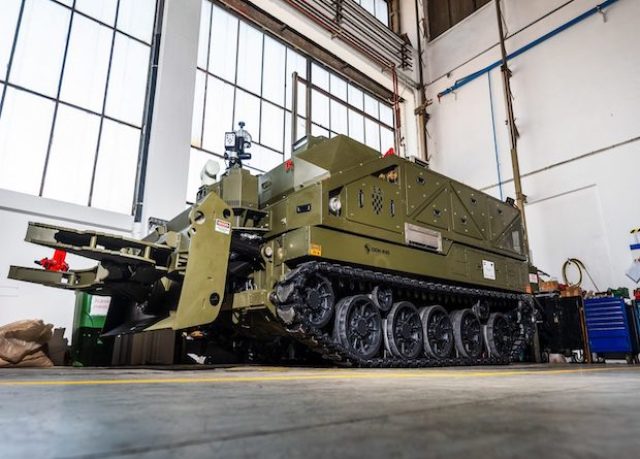The Croatian company DOK-ING has introduced an armored ground robot Komodo. It is designed for radiation, chemical and biological exploration and can operate at high temperatures, complete smoke and lack of oxygen. At the same time, Komodo is also suitable for ordinary engineering work.
Usually, several fighters with measuring equipment and personal protective equipment conduct reconnaissance in places where weapons of mass destruction could be used or a disaster occurred. Robots can significantly speed up this process and reduce the risks for people.
A number of countries are engaged in the development of robotic complexes for radiation, chemical and biological exploration. In the United States, they have been created by iRobot since 2015 on the basis of a portable robot 510 PackBot, which weighs 27 kilograms. The development of a robotic complex for radiation, chemical and biological intelligence in Russia became known in January. It will include ground-based robotic platforms and unmanned aerial vehicles.
The Croatian company DOK-ING presented the Komodo ground robot on June 29 at its event in Zagreb. This is an unmanned armored tracked vehicle designed for radiation, chemical and biological reconnaissance. At the same time, the robot is also suitable for ordinary engineering work.
Komodo weighs 17 tons and is equipped with a hybrid power plant consisting of a diesel generator, drive electric motors and a set of batteries. Thanks to the latter, it can work at high temperatures, complete smoke and lack of oxygen. The robot can reach speeds of up to 30 kilometers per hour, and on the way it can recognize and avoid obstacles. To move loads, it has a manipulator in the back and a bulldozer knife-shield in the front. The first lifts up to 900 kilograms, and the second-up to two tons. At the same time, the knife-shield is still able to move obstacles weighing up to ten tons and remove soil during decontamination of surfaces.
In the army, robots can conduct not only reconnaissance, but also combat operations. Earlier, we wrote how RCV-L ground-based hybrid robots fired a machine gun and launched a Javelin rocket during tests.
Vasilisa Chernyavtseva

